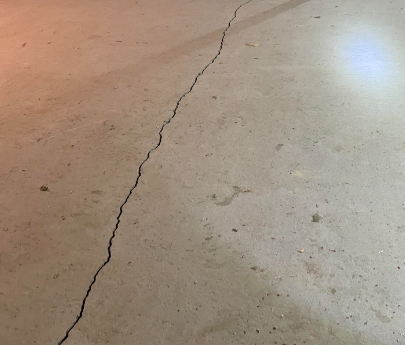Concrete is a durable and versatile building material, but it is not immune to cracking. Understanding the types of concrete cracks can help in identifying potential problems and taking precautionary measures. Below are five concrete cracks you need to know.

Plastic Shrinkage Cracks
According to the Concrete Society, plastic shrinkage cracks occur when the concrete is still in its plastic state, which means it has not yet fully hardened. These cracks are caused by rapid loss of water from the surface of the concrete, usually due to high temperatures, wind or low humidity. They are typically shallow and appear as irregular, parallel lines on the surface.
Settlement Cracks
Settlement cracks happen when the ground beneath the concrete slab moves or settles unevenly. This type of crack often appears near columns, walls, or other supporting structures. Settlement cracks can be a sign of more serious issues with the foundation, so it’s important to monitor them closely and seek professional advice if they worsen. Sealing foundation cracks can help prevent moisture intrusion and further structural damage, ensuring the stability of the foundation over time. Using high-quality sealants and expert application methods can effectively protect the foundation from deterioration.
Expansion Cracks
Concrete expands and contracts with temperature changes. When concrete heats up, it expands and can crack if it does not have enough room to do so. These expansion cracks usually run vertically and can be mitigated by installing control joints. Control joints are planned cracks that allow for movement and prevent the random cracking of concrete slabs.
For those interested in learning about concrete Swindon, consider contacting a specialist such as www.monstermixconcrete.co.uk/concrete-swindon/.

Heaving Cracks
Heaving cracks are caused by the ground beneath the concrete expanding, often due to freezing and thawing cycles or the presence of tree roots. These cracks can be quite wide and may cause the concrete to lift. Addressing drainage issues and removing trees that are too close to concrete structures can help reduce the risk of heaving cracks.
Overloading Cracks
When concrete is subjected to loads beyond its capacity, it can crack. Overloading cracks often appear as diagonal or stair-step cracks in walls or slabs. Ensuring that concrete structures are designed to handle anticipated loads and avoiding excessive weight on slabs can help prevent these types of cracks.


